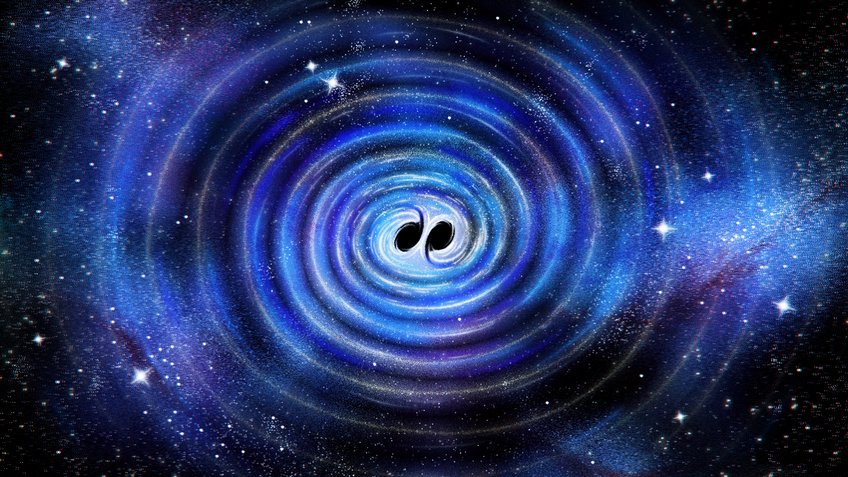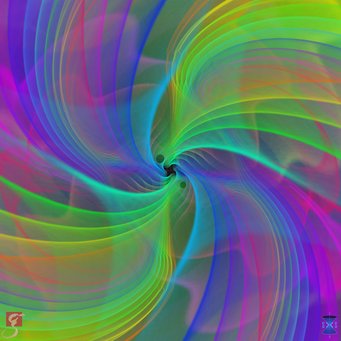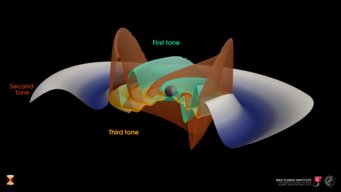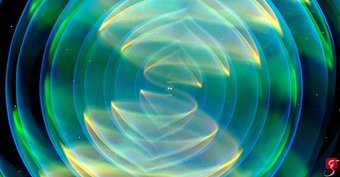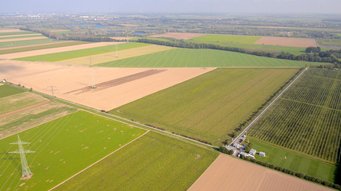Ten years of gravitational-wave astronomy and the clearest signal yet
The LIGO-Virgo-KAGRA collaboration and the Max Planck Institute for Gravitational Physics celebrate the anniversary and present new, exciting results.
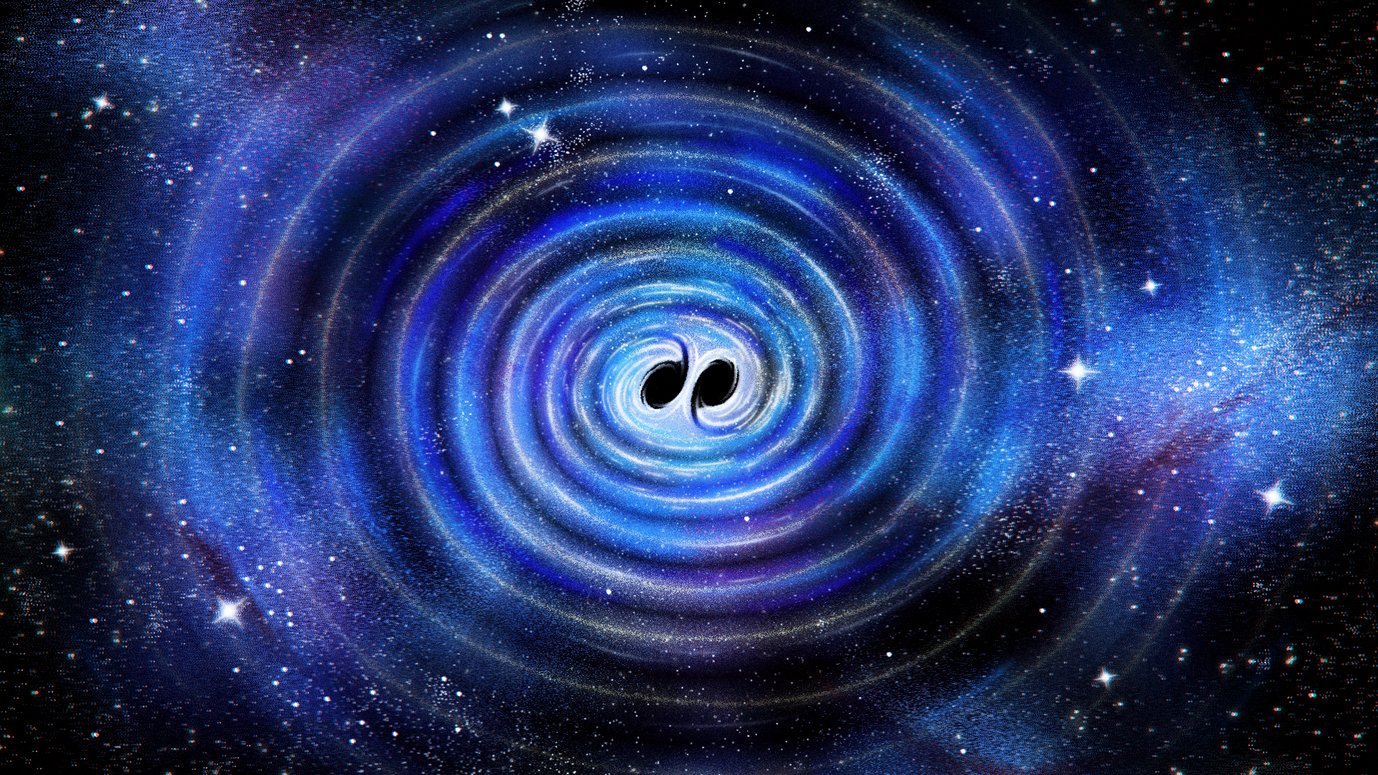
To the point:
- Gravitational waves: On 14 September 2015, the first detection of gravitational waves from a binary black hole coalescence, GW150914, marked a major milestone in astronomy and the beginning of a new era of cosmic observation.
- Technological and theoretical advances: The outstanding improvements of the detectors, waveform models and analysis methods have enabled unprecedented observations in the last decade: about 300 coalescences of black holes and neutron stars have been detected.
- New discovery: A binary black hole coalescence announced today (GW250114) is the clearest signal to date. It allowed scientists to conduct some of the most stringent tests of general relativity, identify or constrain at least three gravitational-wave tones emitted during the ringdown, which occurs shortly after the merger, and confirm Hawking’s black hole area theorem.
- Multi-messenger astronomy: The first gravitational-wave detection of a neutron star coalescence in 2017 (GW170817) demonstrated the ability to observe cosmic events through both gravitational and electromagnetic waves.
- Ongoing innovative research: AEI researchers continue to develop ever more accurate waveform models, fast and efficient analysis methods, and advanced detector technologies in preparation for upcoming LIGO-Virgo-KAGRA observing runs and next-generation detectors that promise deeper insights into cosmic events.
The first detection of gravitational waves from a binary black hole merger
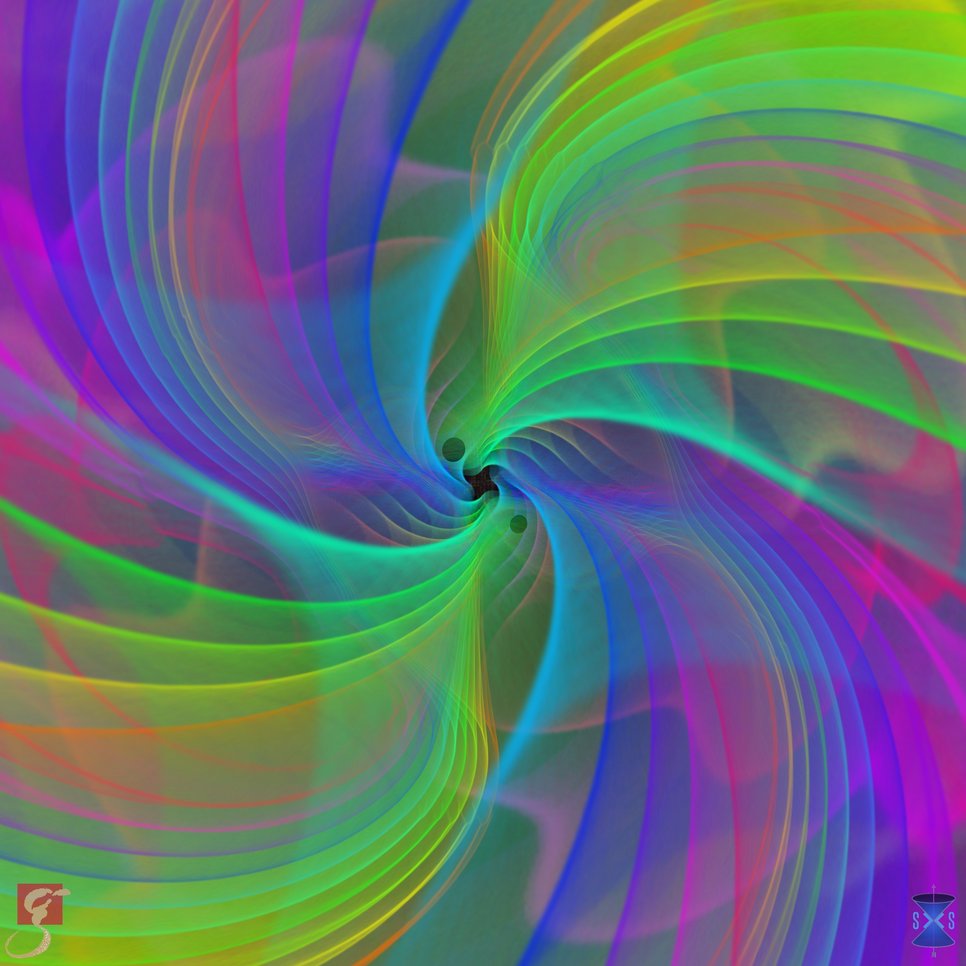
On 14 September 2015, a signal arrived on Earth, carrying information about a pair of black holes that had spiraled together and merged in a distant galaxy. The twin detectors of the Laser Interferometer Gravitational-Wave Observatory (LIGO) made the first-ever detection of gravitational waves from merging black holes. Since then, about 300 other coalescences of black holes and neutron stars have been observed, ushering in a new era of astronomy. Researchers at the Max Planck Institute for Gravitational Physics (Albert Einstein Institute, AEI) and Leibniz University Hannover have made crucial contributions in many key areas and continue to shape its future.
“It has been an incredible journey that has brought us to this remarkable milestone 10 years ago. From the field’s early days, our researchers have been driving the development of new technologies and analysis techniques,” says Karsten Danzmann, director at the AEI and director of the Institute for Gravitational Physics at Leibniz University Hannover. “Today, we continue to build on this momentum as we work towards a future where gravitational-wave astronomy will reveal even more secrets of the Universe.”
The historic discovery enabled astronomers to observe the Universe through three different means. They had previously captured electromagnetic waves, such as visible light, X-rays, and radio waves, as well as high-energy particles and neutrinos. However, on 14 September 2015 researchers observed a cosmic event for the first time by detecting the ripples it caused in spacetime. For the discovery, Rai Weiss, Kip Thorne, and Barry Barish were awarded the Nobel Prize in Physics in 2017.
Today, the LIGO-Virgo-KAGRA (LVK) collaboration operates an international gravitational-wave detector network consisting of the two LIGO instruments in the USA, the Virgo detector in Italy, KAGRA in Japan, and GEO600 in Germany. Together they have captured a total of about 300 black hole coalescences, some of which are confirmed while others await further analysis.
Exciting results from the clearest signal yet
The improved detector sensitivity, state-of-the-art waveform modeling, and highly efficient data analysis are exemplified in the recent discovery of a gravitational-wave signal, GW250114, produced by the coalescence of two black holes. The event was similar to the first detection, as both came from a coalescence of black holes with masses between 30 to 40 times that of our Sun about 1.3 billion light-years away. But thanks to a decade of technological, theoretical, and modeling advances the GW250114 signal is dramatically clearer and its properties can be inferred accurately.
In essence, the recent detection of GW250114 allowed the LVK team to “hear” two black holes growing as they merged into one, thereby verifying Hawking’s theorem.
Furthermore, in the published study, the researchers were able, for the first time, to confidently pick out two distinct gravitational-wave modes or tones in the ringdown. This is the phase when the black hole settles into its final state right after the merger. The modes are like characteristic sounds a bell would make when struck; they have somewhat similar frequencies but die out at different rates, which makes them hard to identify. The improved data for GW250114 meant that the team could extract the two tones, demonstrating that the black hole’s ringdown occurred exactly as predicted by the rotating black hole solution in general relativity.
Brand-new study presents most stringent tests of general relativity and black hole nature
Today, the LVK submitted another study to Physical Review Letters that places limits on a predicted third tone in the GW250114 signal, and performs some of the most stringent tests yet of general relativity’s accuracy in describing merging black holes. Based on this signal alone, some of those tests are two to three times more stringent than the same tests obtained by combining dozens loudest events from the most recent gravitational-wave signal catalog (GWTC-4.0).
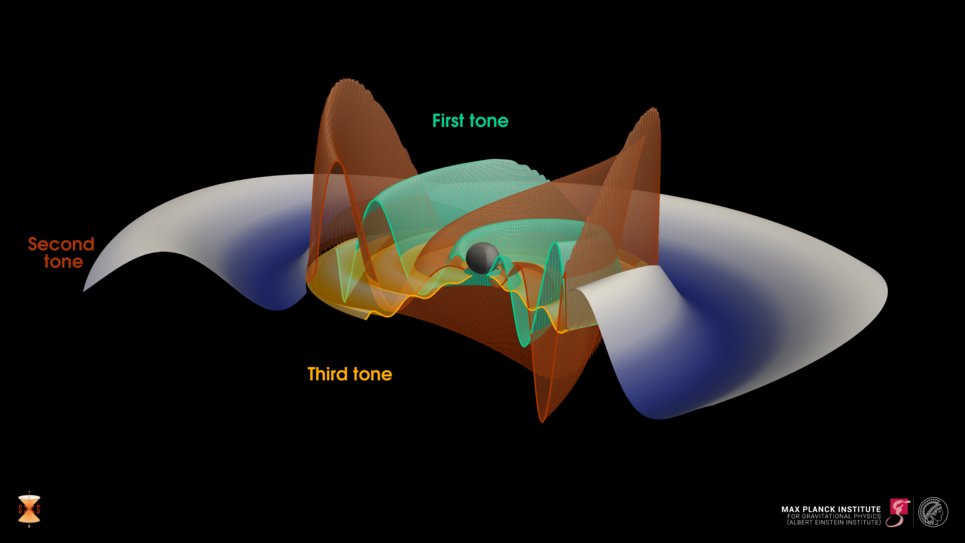
“Not only were we able to conduct some of the most stringent verifications of general relativity. For the first time, we also constrained a third, higher-pitch tone in the ringdown of the GW250114 remnant black hole,” explains Alessandra Buonanno, director at the Max Planck Institute for Gravitational Physics and chair of the editorial team of the LVK study submitted today.
Lorenzo Pompili, a PhD student at the AEI in Potsdam and a member of the editorial team of the second LVK study, says: “We have performed black hole spectroscopy, which means studying the distinct tones emitted during the final ringdown stage of the coalescence. By constraining multiple tones and confirming that they match the expected frequencies and decay times, we can robustly test whether the remnant truly behaves like a rotating black hole.”
Buonanno adds: “Overall, Einstein’s theory of general relativity and the Kerr’s black hole solution have once again been empirically vindicated.” The rotating black hole solution discovered in 1963 by Roy Kerr has had a profound impact in astrophysics, since the discovery of quasars, and in fundamental physics.
Pushing the Limits
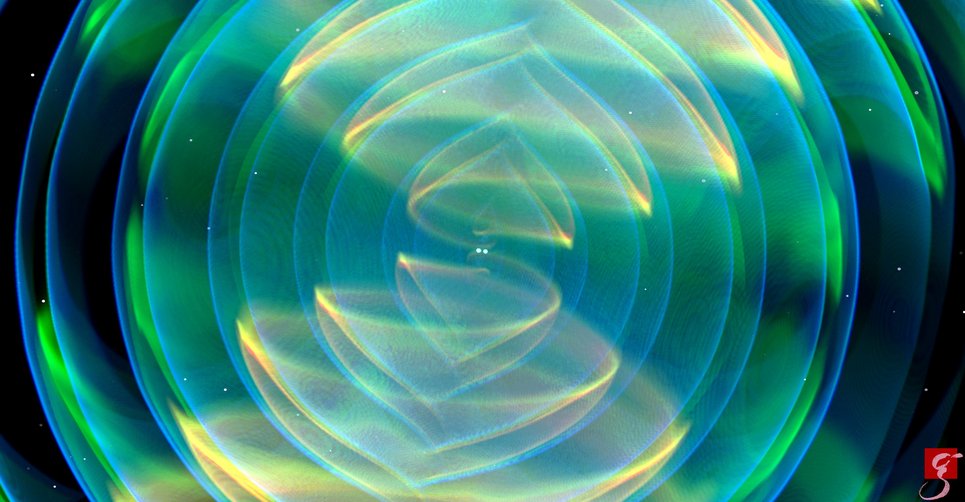
Over the past decade, AEI researchers have contributed to the understanding of gravitational-wave events involving neutron stars. Like black holes, neutron stars are formed by supernova explosions, which mark the end of a massive star’s existence. They weigh less than black holes and, unlike black holes, emit electromagnetic waves. In August 2017, LIGO and Virgo observed a merger between two neutron stars, followed by a plethora of electromagnetic signals from gamma- to X-rays to infrared and radio waves. The kilonova sent gold and other heavy elements into space and attracted the attention of telescopes worldwide.
This multi-messenger astronomy event marked the first time that both light and gravitational waves had been captured from the same cosmic event. Today, the LVK collaboration continues to alert the astronomical community to potential neutron star mergers, who then use telescopes to search the skies for signs of kilonovae. AEI researchers routinely contribute to these alerts.
A multitude of discoveries
Other notable LVK scientific discoveries include the first detection of collisions between one neutron star and one black hole; asymmetrical mergers, in which one black hole is significantly more massive than its partner black hole; the discovery of the lightest black holes known, challenging the idea that there is a “mass gap” between neutron stars and black holes; and the most massive black hole coalescence seen yet with a merged mass of 225 solar masses. For reference, the previous record-holder for the most massive coalescence had a combined mass of 140 solar masses.
AEI researchers develop and improve sophisticated waveform models
Researchers at the AEI have developed new waveform models that are used routinely by the LVK collaboration to distinguish real cosmic sources from random fluctuations and terrestrial disturbances that appear in the detector.
Over the past decade, the institute’s scientists have continuously improved the accuracy and efficiency of their waveform models. They have developed ever more accurate waveform models that account for the complex dynamics of highly spinning black holes, such as those observed in the recent detection of GW231123. These models are essential for extracting accurate information from the signal and understanding the properties of the astrophysical objects involved in the coalescence.
The institute’s researchers have also developed new parameter estimation methods based on machine learning methods and neural networks. These provide a rapid and accurate way to infer the properties of binary black hole and binary neutron star mergers. The novel methods are particularly useful for analyzing large datasets and identifying potential signals in real-time.
Development of high-power laser systems
Researchers at the AEI and at Leibniz University Hannover have made key contributions to the high-power laser systems used in gravitational-wave detectors. These high-power laser systems are essential for the operation of the instruments, as they provide the intense and extremely pure and stable laser light needed to measure the minuscule distance changes caused by gravitational waves. The institute’s researchers have developed the main laser source currently in use in the LIGO instruments and have tested and helped implement upgrades to it. The amplifier stage of the current laser sources in the Virgo and KAGRA instruments is also based on developments and tests carried out by a collaboration between the institutes and the Laser Zentrum Hannover.
Technology testbed GEO600 and squeezed light for more sensitive detectors
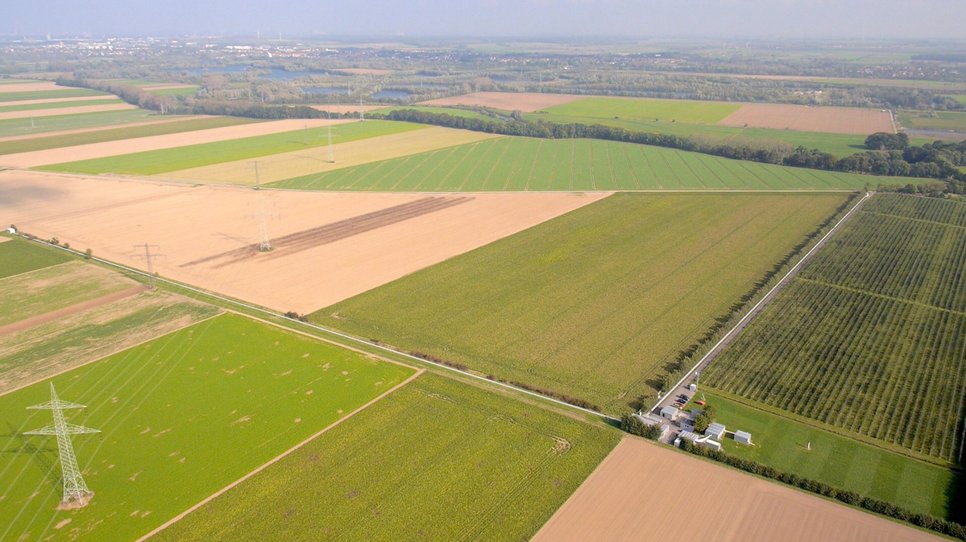
The German-British GEO600 gravitational-wave detector, operated by the AEI and Leibniz University Hannover, played a crucial role in the development of gravitational-wave astronomy over the past decade. As a testbed for advanced detector techniques, GEO600 enabled the development of key technologies that have improved the sensitivity of the other detectors. GEO600 was the first detector to use squeezed light in 2010. Squeezed light is a technique that reduces the quantum noise in gravitational-wave detectors, allowing them to detect weaker signals. The institutes’ researchers have developed and built squeezed-light sources for the GEO600 and Virgo detectors, and have helped to push the boundaries of squeezed-light technology. These technological advancements have increased the sensitivity of gravitational-wave detectors and have improved our ability to detect and analyze gravitational-wave signals.
Continuing the quest for new discoveries
In the coming years, the scientists and engineers of the LVK collaboration plan to further fine tune their machines, expanding their reach deeper and deeper into space. Researchers at the Max Planck Institute for Gravitational Physics and Leibniz University Hannover will continue making groundbreaking contributions to the field. “With the third-generation detectors we can expect to hear the earliest black hole mergers in the Universe, make even more precise measurements of gravitational-wave events and gain a deeper understanding of the cosmic mysteries,” explains Frank Ohme, who leads an independent research group at the AEI. Researchers at the institutes will continue to push the boundaries of detector technology, waveform model development, and analysis techniques, that drive the field forward and enable new discoveries.
The LIGO-Virgo-KAGRA Collaboration
LIGO is funded by the US National Science Foundation and operated by Caltech and MIT, which together conceived and built the project. Financial support for the Advanced LIGO project was led by the NSF with Germany (Max Planck Society), the United Kingdom (Science and Technology Facilities Council), and Australia (Australian Research Council) making significant commitments and contributions to the project. More than 1,600 scientists from around the world participate in the effort through the LIGO Scientific Collaboration, which includes the GEO Collaboration. Additional partners are listed at my.ligo.org/census.php.
The Virgo Collaboration is currently composed of approximately 1,000 members from 175 institutions in 20 different (mainly European) countries. The European Gravitational Observatory (EGO) hosts the Virgo detector near Pisa in Italy, and is funded by Centre National de la Recherche Scientifique (CNRS) in France, the National Institute of Nuclear Physics (INFN) in Italy, the National Institute of Subatomic Physics (Nikhef) in the Netherlands, The Research Foundation – Flanders (FWO), and the Belgian Fund for Scientific Research (F.R.S.–FNRS). A list of the Virgo Collaboration groups can be found at: A list of the Virgo Collaboration groups can be found at: https://www.virgo-gw.eu/about/scientific-collaboration/. More information is available on the Virgo website at https://www.virgo-gw.eu.
KAGRA is the laser interferometer with 3-kilometer arm length in Kamioka, Gifu, Japan. The host institute is the Institute for Cosmic Ray Research (ICRR), the University of Tokyo, and the project is co-hosted by National Astronomical Observatory of Japan (NAOJ) and High Energy Accelerator Research Organization (KEK). KAGRA collaboration is composed of more than 400 members from 128 institutes in 17 countries/regions. KAGRA's information for general audiences is at the website gwcenter.icrr.u-tokyo.ac.jp/en/. Resources for researchers are accessible from gwwiki.icrr.u-tokyo.ac.jp/JGWwiki/KAGRA.
